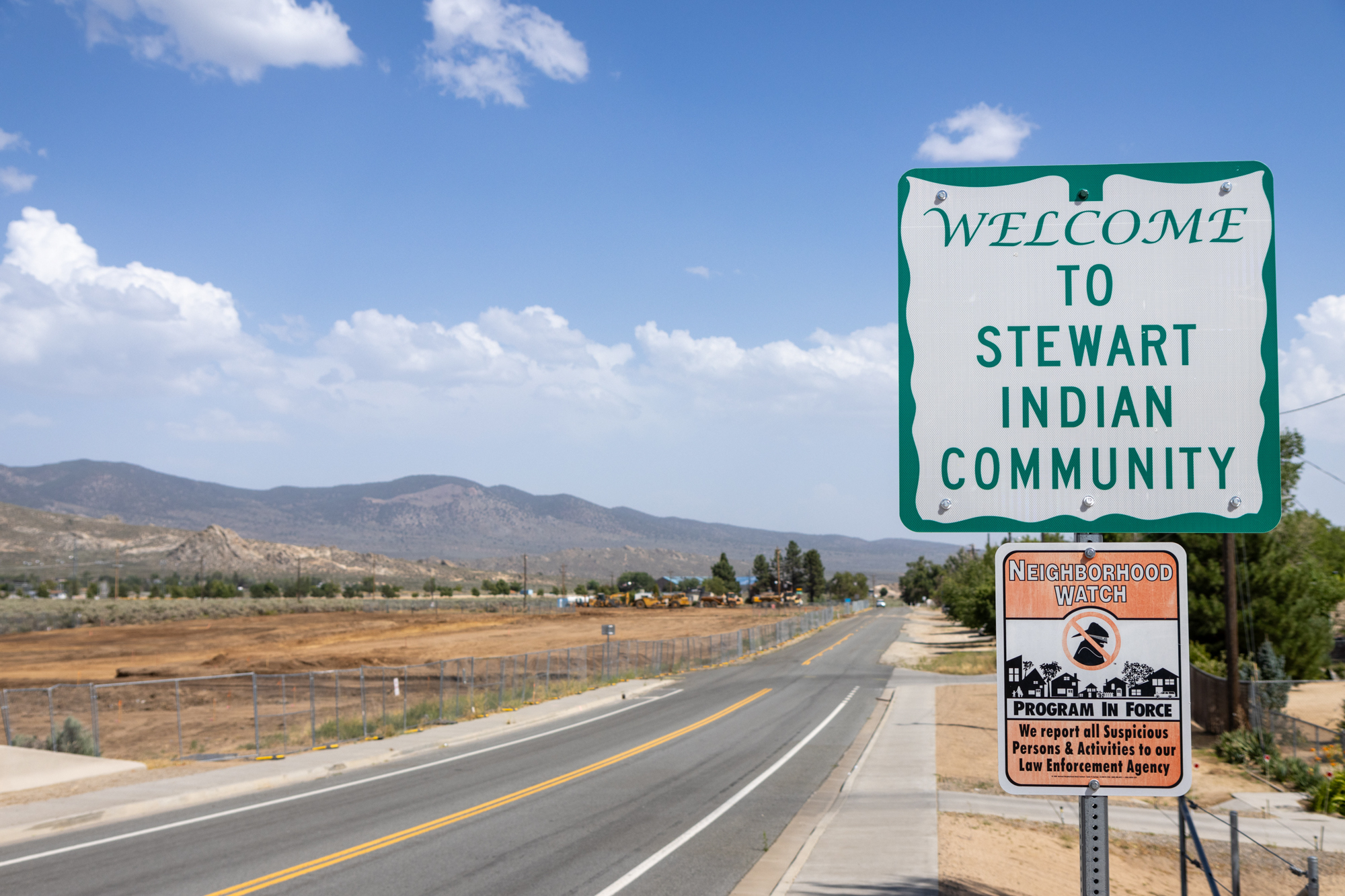Tribe planning to add 20 affordable homes, community center in Carson City area

Stewart Community, part of the Washoe Tribe and located south of Carson City, is working on a historic $14 million affordable housing development — the largest housing project the tribe has ever taken on.
The project includes 20 new homes for low-income residents and a community center that will provide community activities such as after-school programs, and will offer units with a variety of payment plans including rental and rent-to-own programs.
It's the first housing project that the Washoe Housing Authority — the tribe's housing agency — has developed in three decades.
“A lot of people, they want to live within the community. They want to be able to raise their kids within the community. I mean, that's the whole sense of being a tribe is,” said Martin Montgomery, the executive director of Washoe Housing Authority. “It really does help with that sense of belonging, I think, for tribal members wanting to stay within the community or those who live off reservation and want to return to the communities.”
The Washoe Tribe is made up of around 3,000 people and is located in Northern Nevada around Reno, Carson City and Gardnerville, as well as in Alpine County, California.
Tribal leaders say the new development will give people the opportunity to live within the reservation community.
“It's huge,” said Washoe Tribal Chairman Serrell Smokey. “Twenty homes that are going to pop up is one of the largest ways we've been able to fill that need ever, really.”

Development is headed by a national firm, Red Stone Equity Partners, which is leveraging low-income tax credits as well as a $5.5 million Home Means Nevada state housing grant, according to the Nevada Appeal.
Montgomery said sagebrush and signage on the development should be completely cleared out soon and the Washoe Housing Authority hopes to install slab foundations before the winter.
The development is decades in the making — the initial idea for the program was birthed in the late 70s. Smokey and Montgomery attribute the long delay to the slow wheels of government, other development in the area and turnover in tribal leadership.
“[The first documentation of the housing development] was just surveying the area, seeing if it was going to be a good fit,” Montgomery said. “What halted the project was that was the first time the freeway was actually introduced to coming through that area, and so everything got put on hold.”
As Highway 395 bypass was built in close proximity to the Stewart Community, tribal leadership changed, and so did the master plan goals, Smokey said.
“It's all the tribal leadership coming up with ideas and goals that they wanted to achieve, but nobody's been able to do it,” he said. “We've been able to kind of change things and streamline the processes just within the past few years.”
Another setback came when the Washoe Tribe had another tax credit-funded project underway in California. As a result, the Washoe Housing Authority withdrew from the Stewart Community funding application.

Montgomery said this is just the first phase of what the Washoe Housing Authority has planned for Stewart Community housing. Over the next decade the housing authority plans to add more homes.
“Hopefully phase two will encompass some new ideas as well for those moderate- to high-income families," Montgomery said. "So that way, we're not penalizing people for having those extra two jobs or a little bit higher income."
The next stages will include more housing, but geared towards more middle- to high-income residents. However, Smokey said most available housing funds are geared toward lower-income residents.
Even an addition of 30 homes would house half of the tribe's current waiting list, Smokey said. However, the Washoe Housing Authority is limited to the boundaries outlined in the funding programs.
"That was built under the assumption that Native Americans would never make more than low-income," Smokey said. "But that's just not true."

The Washoe Housing Authority's small staff is another limiting factor, Montgomery said. There are two or three people doing the same work that whole departments in large agencies do in applying for the same grants.
One thing Montgomery would like to see is the state set aside specific housing funding for tribal communities to level the playing field for not just the Washoe Tribe, but other tribal groups in Nevada as well.
"I know that the other communities have development plans as well," Montgomery said. "So we're gonna be working with everybody to try to get new houses built in all the communities."
As the Washoe Housing Authority continues to develop its housing, Smokey said the tribe is looking forward to the investment in the community and is proud of what the housing authority has done.
“This project is monumental," Smokey said. "Being able to push forward and get everything approved, get things passed and make what is our smallest community [to what] is probably not going to be our smallest community anymore."
